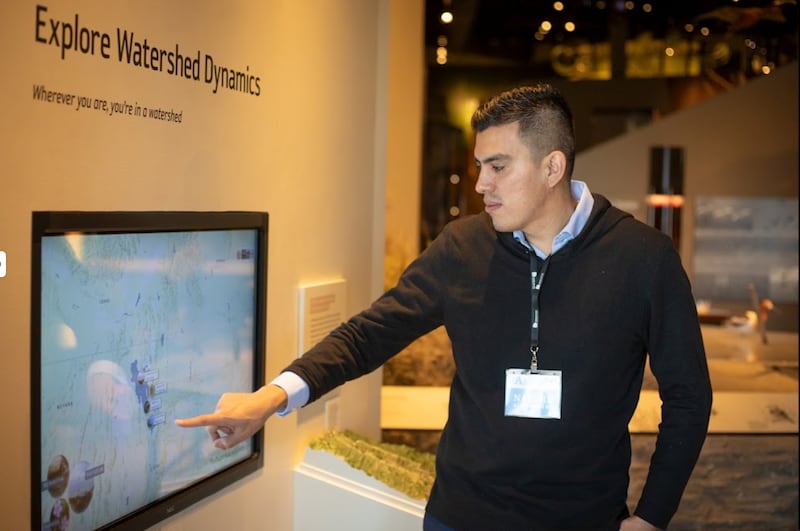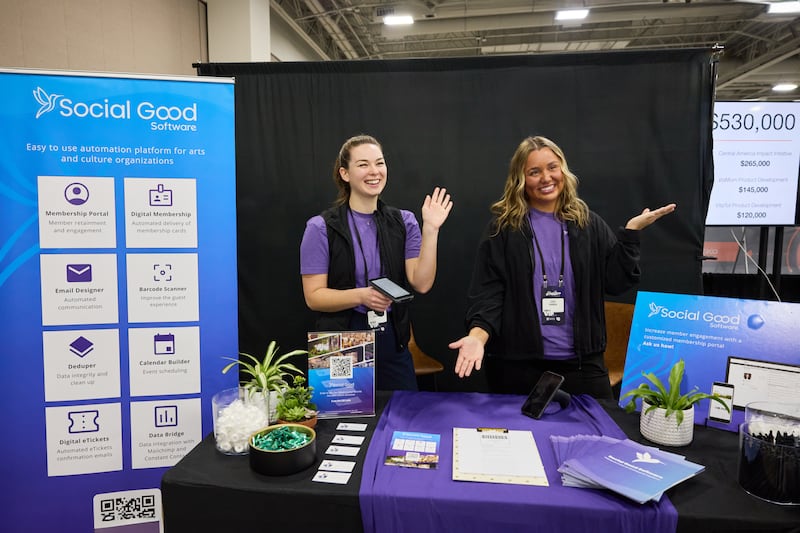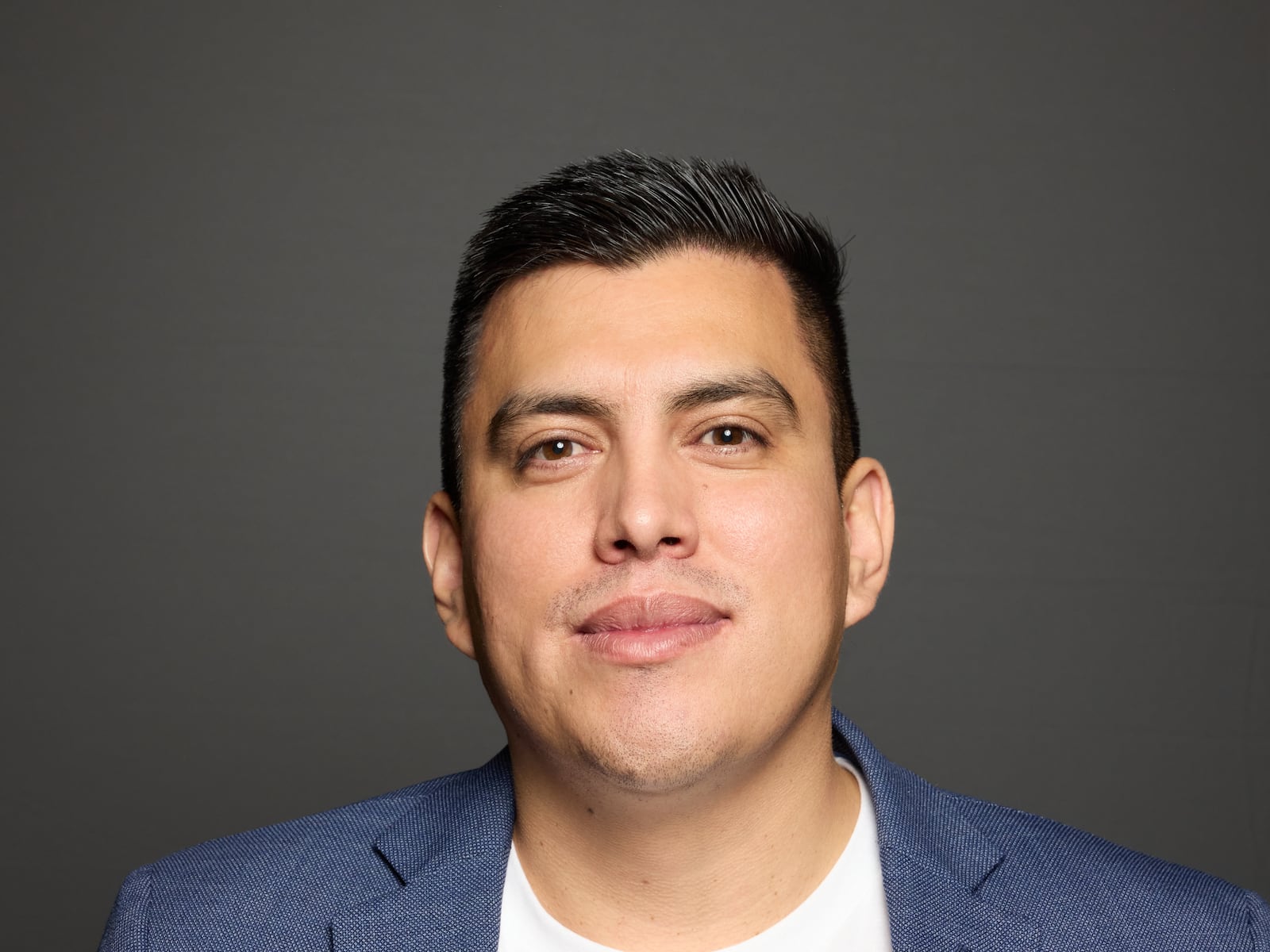Raising venture capital and the United States immigration system have more in common than you might think.
In both cases, high-consequence decisions are entrusted to a small group of gatekeepers who expect supplicants to offer a compelling narrative. In both cases, rejection can seem arbitrary and is usually received without the benefit of an explanation. Finally, in both cases, success opens doors and opportunities that can change lives.
Rick Hernandez, founder of Social Good Software (SGS), recently beat the odds when he was named a winner in the Morgan Stanley Inclusive & Sustainable Ventures Lab Salt Lake City startup pitch competition.
Twenty-five years ago, he beat the odds when his family was legally admitted into the U.S. on what was to be their final attempt, after four tortuous journeys from a tiny pueblo in southern Mexico; journeys at times on foot, on trucks and in cars, culminating in a two day bus trip each way.
A little good goes a long way
“My mom had a taco stand. As a kid, I’d go with her and we’d pick up vegetables and limes and tortillas and everything we needed. What really stuck with me was seeing that if you pull together the right resources and make something good, people will pay you for it,” Hernandez remembers. “They loved her tacos, and every night she’d make a little bit of profit. That’s the money she used to get us to the States.”
They made their way from El Paso, Texas, to Kearns, Utah, to meet family. Hernandez showed up for his first day of third grade without any understanding of English.
“I knew ‘lunch’ and ‘recess’ and that’s about it,” Hernandez recalls, adding that with no real ESL resources, it took him a couple of years to become proficient, during which time his family bounced from apartment to apartment and school to school all over the Salt Lake Valley’s west side.

“Every day was all about how to make it to the next day. My mom always told me not to cause problems because we already had enough problems to deal with,” Hernandez says.
By his early teens, Hernandez and his family finally achieved stability, allowing him to settle in at the same junior high and high schools; it also allowed him to settle in with some negative influences.
“When I was 16, I was hanging around with the wrong people, and I lost one of my best friends to gang violence,” Hernandez says. “It all refocused me to do better in my life. I went to my high school counselor and asked her to tell me the job that pays the most. She said, ‘software engineer.’”
That counselor enrolled Hernandez in half-day classes at Granite Technical Institute, offering him a much-needed turning point.
“I was able to avoid all those bad influences half the day. Instead, I was with different kinds of people — a little bit nerdier, a little bit geekier, a lot more into math and science and technology. Basically, they were really smart and I was really dumb,” Hernandez laughs.
Following high school, Hernandez earned an associate degree in computer science from Salt Lake Community College and landed a good job working for a local tech startup, all the while feeling his calling lay elsewhere.
“I went out on my own for about a year and a half as a developer for hire. But when it was time to get paid, nobody wanted to. I was pretty close to homelessness at that point, so I took an IT job at the Natural History Museum of Utah (NHMU), working with their visitor experience team.”

At NHMU, Hernandez learned how to engineer applications, enhancing the functionality of Altru by Blackbaud: the most common customer management system (CMS) used by cultural institutions like museums, zoos, aquariums, gardens and historical sites. About 18 months later, he took a leave from NHMU and returned to Mexico for six months.
“As soon as he got back, we said, ‘OK, we’re so glad you’re back. Here’s a list of things we need you to do,’” remembers Mark Ingalls, NHMU’s IT manager and Hernandez’s boss while at the museum. “He said, ‘I’d be happy to do that stuff for you but not as your employee. I’m going to start my own company.’ He had figured out he could sell the work he does for us to 800 other Altru customers, and he’s done a fantastic job building that up.”
With that, SGS was born and NHMU was its first customer. Like with his mom’s taco stand, Hernandez pulled the right resources together in the right way, and the output was worth more than the sum of its parts.
Don’t let a good crisis go to waste
Today, patrons of cultural institutions are most likely to interact with SGS when they buy and save a digital ticket or membership card on their mobile device, use that device to make a donation, manage their membership online, and scan their tickets upon arrival.
It was late 2019 when New York-based user experience (UX) designer Anya Elgueta was looking for a change, professionally.
“I was going through my network to see what was out there, and a friend told me he knew a guy in Utah who’s got a startup building software for museums. I was intrigued because I was working a little in the museum space at the time. Initially, Rick wanted me to do something other than use my main skill set, helping with sales, instead,” Elgueta says. “I found Rick to be very level-headed. He is a visionary, yes, but he also had an idea that was working. I decided to give it a try.”
In joining SGS, Elgueta became employee number two.
However, the early growth that inspired Elgueta came to an abrupt halt a few months later with the arrival of COVID-19.
“The kind of path we’re on requires a different amount of capital. Something that would have taken us 10 years will now take us two or three. Our team will grow a lot faster, and we’ll help the organizations we work with to grow a lot faster.”
— Rick Hernandez
“One day, all the museums closed, our entire market, some for two years. Even if we wanted to do business, we couldn’t,” Hernandez says. “Every museum was in crisis, but I decided not to let a good crisis go to waste. We added waivers to the software that people would sign if they wanted to come, agreeing to wear a mask, social distance and follow the rules. We called it COVID-friendly software, and they would not have been able to open those museums without our help.”
SGS added just three new accounts in 2020. By the time lockdowns eased in 2021, two more were on board but Hernandez had exhausted his reserves.
“I applied for a business loan and got nothing but rejections. Our revenue was too low: we didn’t have enough assets they could repossess, they’d never seen this before and didn’t understand the market,” Hernandez says. “So I went out of state to a community lender called MoFi.”
MoFi describes itself as a small business lender serving “disadvantaged entrepreneurs and business owners.”
“They gave us a loan for $85,000, and that’s how I was able to hire Lexi, who is still with me,” Hernandez says.
Like Elgueta, Lexi Parker heard about SGS’s opening for a customer success manager from a friend she and Hernandez had in common. The friend vouched for Hernandez, his vision and product, leaving Parker convinced. Her role has since morphed into something closer to an account manager, though typical of startup life, Parker also handles marketing, PR and more.
“Right away, I was impressed with the big heart Rick has for our clients. He sees himself as taking care of them, and now I do too,” Parker says, adding that though this job thoroughly derailed her intention to enroll in nursing school, “it’s derailed me in a good way.”

Like Parker’s, Elgueta’s position has also shifted. She now oversees UX, which is a function more in line with her training. Elgueta says Hernandez’s willingness to support employees as they evolve professionally has won him a lot of loyalty.
“Nobody works here just to collect a paycheck. It’s not one of those startups where you’re expected to sell your soul. Rick makes sure we have our lives outside of work too,” she says
As the last vestiges of pandemic-era restrictions lifted, SGS’s sales exploded — soaring to 150 client organizations today, all without adding much by way of headcount. Of course, that kind of growth trajectory and scalability are the stuff of a VC’s dreams. Which brings us back to the startup pitch competition.
Beating the odds
Completing the application was the first challenge. It asked for financials, details about his team, the problem they are solving and SGS’s total addressable market size, all backed up by an in-depth business plan. Here, Hernandez had an advantage as he’d recently participated in Goldman Sachs’ 10,000 Small Businesses entrepreneurship training, which included crafting a VC-worthy business plan.
When it came time for Hernandez to tell his story to a panel of six judges, the field was narrowed down to five candidates. He felt honored to be a member of the group.
“They were MBAs, engineers and Ph.D. candidates. It was a very diverse set of companies, all with strong missions and plans to give back,” Hernandez says. “The judges did a really good job vetting the competition up to that point.”
Among the many things Hernandez did not know when submitting his application was that his would be one of 7,000 entries. Where many would be intimidated by those odds, Hernandez says it all felt very familiar to him.
“I’m one out of 7,000 all the time! It’s been like this my whole life.” Hernandez says.

Having won, Hernandez will be considered for a spot in Morgan Stanley’s five-month in-house accelerator program in New York City, which includes a $250,000 investment from the company. The culmination of the program is a Demo Day, where founders present their innovative solutions to a room full of investors and ecosystem partners.
For Hernandez, the cash infusion matters, but winning means much more.
“When Lexi and I were preparing for it, I teared up a little bit because I knew we were at a turning point and this funding was essential to helping our museums. I thought if I didn’t win, I’d be letting them down,” Hernandez says. “I won for our customers but also for myself because it reassured me that we are on the right track. People see value in what we’re doing, and I’m not wasting my time on this scrappy idea I first had in 2019.”
Hernandez has big plans for that growth capital, including the development of technology that will allow museum patrons to securely and smoothly make donations at specific exhibits via tap-to-pay, thereby giving curators insight into what donors would like to see more of.
While Altru has the largest slice of the cultural institution CMS pie, Hernandez says SGS is working to modify its codebase, facilitating interfaces with many more providers and thereby multiplying its addressable market size several-fold. This expansion would not be possible without the support of equity partners.
“The kind of path we’re on requires a different amount of capital. Something that would have taken us 10 years will now take us two or three. Our team will grow a lot faster, and we’ll help the organizations we work with to grow a lot faster,” Hernandez says. “Growth capital takes us out of the slow lane.”

